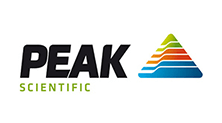The new helium surplus - At what cost to labs?
Talk of a helium crisis following the shortage of 2013 appears to have subsided thanks to increased worldwide production, with labs now readily able to obtain helium. Here we look at what has happened over the last 2 years since the global helium shortage was the hot topic in GC, where do we currently stand and what is the outlook in the short term?

Helium Auctions
A few weeks ago 275 million cubic feet (MCF) of crude helium were auctioned off from the Federal Reserve and sold to bidders from Air Products, Praxair and a small number of other companies for a total of $28.54M1. This auction followed a 2014 auction of 93 MCF of helium that was sold for just over $15M2. The auctions were mandated by the helium stewardship act (HSA) of 2013 which was rushed through US Congress in 2013 to extend the operational lifetime of US Federal reserve in Amarillo, TX. Increasing amounts of crude helium are set to be auctioned off from the Federal Reserve annually until 2018. A recent meeting of the Committee on Natural Resources in the US House of Representatives revealed that the large refining companies such as Air Liquide, Praxair and Air Products bought helium at inflated prices in an effort to stabilize their supply of helium as well as keeping smaller players out of the market3. Their strategy is apparently to sell helium refined from other sources such as Air Products’ new helium refinery at Doe Canyon in Colorado4 and to then draw on their Federal Reserve stocks when demand outstrips production. This strategy should ensure supply in the short-term, although labs will be conscious that the price of helium has almost doubled over the past 24 months5 meaning that although laboratories are not necessarily going to have to worry about sourcing helium, they may have to think hard about how they are going to pay for it. Prof Halperin, of Northwest University who testified at the Committee on Natural Resources oversight hearing in June 2015 voiced concern about availability of liquid helium for research purposes, stating that “as the price has gone up, we have been forced to choose between abandoning a research project or laying off employees and students”6.
Present perspective
One strategy that many labs are now employing is to look at using alternatives to helium in applications for which helium is non-essential. In gas chromatography (GC), helium, nitrogen and hydrogen are most commonly used as carrier gases with helium being the most widely used. Over the past 3 years there has been a great increase in information regarding use of alternative carrier gases with particular focus on hydrogen. The performance of hydrogen at higher linear velocities provides obvious advantages to laboratories that are looking to increase their throughput of samples without compromising on sample quality. One problem facing some labs is that the methods that they use are not approved for use with hydrogen carrier gas, or that performance is impaired when using hydrogen. These are obviously situations where it is essential for labs to continue using helium; however, by switching to hydrogen or nitrogen where helium is not critical to the method’s performance labs will find that they can conserve their helium for use in essential applications or methods.





